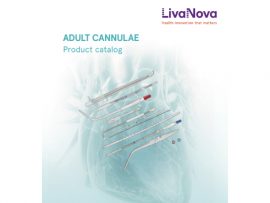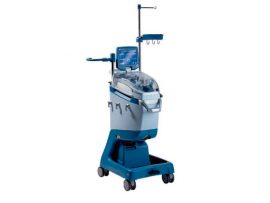Report of the Portable Ex Vivo Organ Perfusion Workforce Survey: Staffing Models and Clinical Trends
Abstract Historically, organs recovered for transplant have been transported using static cold preservation. However, newer portable ex vivo organ perfusion (PEVOP) strategies allow warm organ perfusion during transport. Although PEVOP is a..
Lire la suiteAbstract Aims Pediatric cardiac arrest is associated with high mortality and significant morbidity among survivors. International guidelines for prognostication remain limited due to small heterogeneous patient populations, variable post-return of..
Lire la suiteAbstract Background Non-technical skills (NTS) are social, cognitive and psychological skills that are related to safety and efficiency in the healthcare process. These skills have an important role in the..
Lire la suiteAbstract Objective The aim of this study was to evaluate and compare the predictive value of the neutrophil-to-lymphocyte ratio (NLR) and platelet-to-lymphocyte ratio (PLR) for nosocomial infection in patients undergoing..
Lire la suiteAbstract Background Studies have not explored consciousness during deep hypothermic circulatory arrest (DHCA). However, as studies in cardiac arrest have identified a spectrum of consciousness, we sought to establish the..
Lire la suiteAbstract Introduction Patient blood management (PBM), an evidence-based, patient-centred approach for optimising blood health, faces significant implementation challenges despite regulatory support, and this study explores its adoption within a Portuguese hospital..
Lire la suiteAbstract Objective To investigate the factors contributing to the "ECMO gap," the discrepancy between successful weaning from venoarterial extracorporeal membrane oxygenation (VA-ECMO) and survival to hospital discharge, using different definitions..
Lire la suiteAbstract A novel simulation-based mastery learning (SBML) course for extracorporeal membrane oxygenation (ECMO) cannulation—Introduction to ECMO Cannulation—was developed and tested at the Division of Cardiac Surgery at McMaster University in..
Lire la suiteAbstract Background Delirium is a common neurological complication after cardiac surgery. The purpose of the present study was to analyze the association between hemodynamic fluctuations during cardiopulmonary bypass (CPB) and..
Lire la suiteAbstract Introduction Imbalance in the redox equilibrium is common in any type of aggression. Cardiopulmonary bypass (CPB) initiation induces metabolic perturbations, and reliable biological monitoring tools for this condition are..
Lire la suiteAbstract Objectives: Accidental hypothermia has high mortality. Rewarming is the initial primary management strategy. However, detailed evidence on rewarming management is limited, that is, rewarming rate is unclear, particularly with..
Lire la suiteAbstract Background Acute kidney injury (AKI) usually occurs after cardiopulmonary bypass (CPB) and threatens life without timely intervention. Early assessment and prevention are critical for saving AKI patients. However, numerical..
Lire la suiteAbstract Poor or worsening functional status of lung transplant (LTx) candidates is a key risk factor for waitlist and post-transplant mortality. As more critically ill adults and children are listed..
Lire la suiteAbstract Extracorporeal membrane oxygenation (ECMO) is a form of life support for critically ill patients with severe respiratory or cardiac failure. Interactions between patient blood and ECMO biomaterials increase the..
Lire la suiteAbstract In-hospital mortality after venoarterial extracorporeal membrane oxygenation (VA-ECMO) remains high. This study compared the performance of the Survival after Venoarterial ECMO (SAVE) score with machine learning (ML) models incorporating..
Lire la suiteAbstract Background The immediate postoperative period after heart surgery poses a substantial risk of life-threatening complications, notably acute pulmonary and cardiac failure. Use of noninvasive ventilation (NIV) may reduce the..
Lire la suiteAbstract Organ preservation plays a critical role in addressing transplantation challenges, including donor shortages and ischemia-reperfusion injury (IRI). Continuous advancements in preservation technologies are essential to meet the increasing demand..
Lire la suiteAbstract OBJECTIVES Peripheral cannula selection in minimally invasive cardiac surgery (MICS) is crucial, as venous drainage limitations during cardiopulmonary bypass (CPB) can impair end-organ perfusion and overall outcomes. This study..
Lire la suiteAbstract Vasoplegia syndrome is a specific form of vasodilatory shock encountered in patients who undergo cardiac surgery, most commonly with cardiopulmonary bypass, which is characterized by severe hypotension in the..
Lire la suiteAbstract Background: A virtual simulated placement (VSP) is a computer-based version of a practice placement. COVID-19 drove increased adoption of web-based technology in clinical education. Accordingly, the number of VSP..
Lire la suiteAbstract Objective: This study aimed to identify disruptions perceived by operating theatre staff to improve concentration, patient safety and quality of care. Methods: A survey of 156 medical staff at..
Lire la suiteAbstract Introduction: Blood transfusion is associated with adverse clinical and surgical outcomes. Strategies like the Patient Blood Management program, which includes blood cell salvage, contribute to reducing the use of..
Lire la suiteWe present an enhanced percutaneous decannulation technique for a patient undergoing veno-arterial extracorporeal membrane oxygenation. This innovative approach uses two distinct percutaneous vascular devices, offering a more reliable and more..
Lire la suiteThis video demonstrates the technique of open cut down femoral vessel cannulation for cardiopulmonary bypass during minimally invasive procedures using the semi-Seldinger technique. The information and views presented on..
Lire la suiteImplantation of Syncardia Total Artificial Heart in Patient with severe biventricular failure with the usage of CPB as well as Bicaval toal inflow cannulation and aortic cross clamp without usage..
Lire la suiteAbstract Objective To review and compare the frequency of thrombus and adverse events in patients treated with heparin or bivalirudin systemic anticoagulation strategies supported on combined venoarterial extracorporeal membrane oxygenation..
Lire la suiteAbstract Background Veno‑venous extracorporeal membrane oxygenation (VV‑ECMO) is associated with a high transfusion burden. While trials have concluded that red blood cell (RBC) storage does not impact patient morbidity and..
Lire la suiteAbstract There are conflicting clinical data on whether the use of a distal perfusion catheter (DPC) is beneficial for reducing the risk of limb ischemia in peripheral venoarterial extracorporeal membrane..
Lire la suiteAbstract Heparin, a high alert anticoagulant medication, is commonly used in medical settings in preventing and treating thrombotic events. However, its administration carries inherent risks for medication errors, bleeding complications..
Lire la suiteAbstract Purpose The evidence supporting the benefit on clinical outcomes of prone positioning during veno-venous extracorporeal membrane oxygenation (V-V ECMO) for acute hypoxemic respiratory failure remains inconclusive. We aimed to..
Lire la suite



















